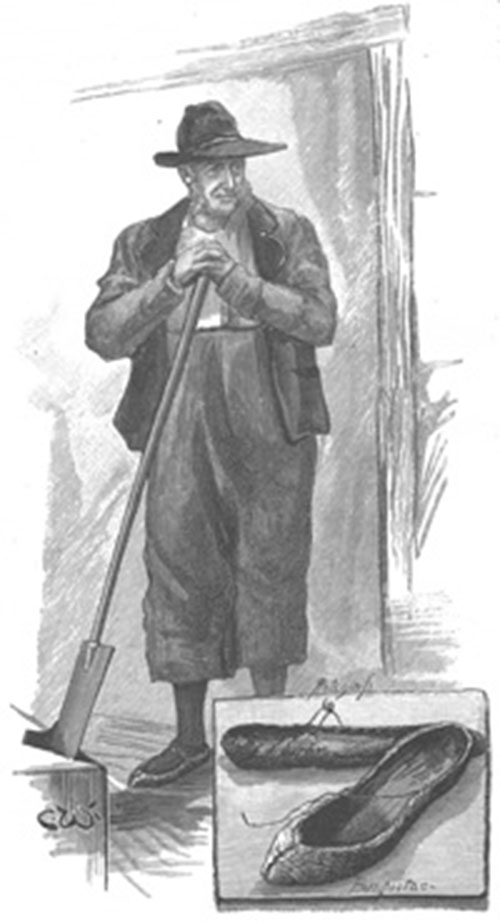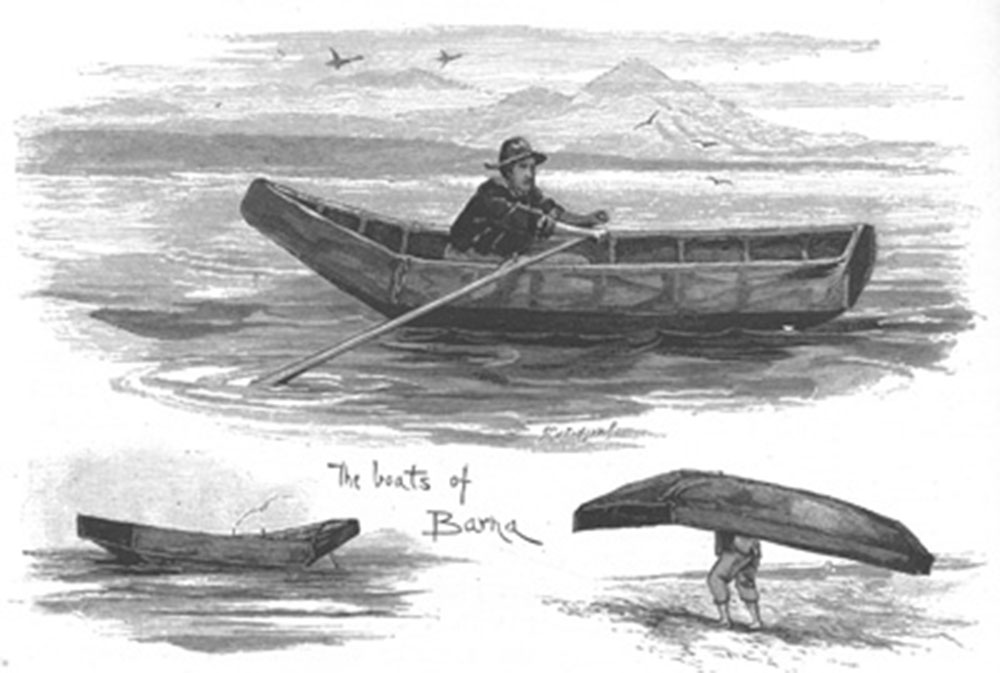Arran Islands - Irish Pictures (1888)
From Irish Pictures Drawn with Pen and Pencil (1888) by Richard Lovett
Chapter VII: Connemara … continued
« Previous Page | Start of Chapter | Book Contents | Next Page »
Among the groups gathered at the fish market or clustering around Galway Harbour, the stranger will occasionally see men dressed like the one depicted in the engraving. He exhibits a facial type not common in the crowd, he wears very distinctive knee-breeches or knickerbockers, and his shoes, technically known as pampootas, are made of untanned cowhide with the hair left on, cut low at the sides, with a narrow pointed piece to cover the toes.
It is said that experience has proved that such shoes or sandals as these are best suited for the rocky soil such men have to tread. And when the stranger, his curiosity aroused, desires to know whence these men come, he discovers that they are from the Arran Islands. These are three rocky islands lying off the mouth of Galway Bay, abounding in ruins of the most remarkable kind, and inhabited by a simple and kindly race of peasant fishermen. To describe in any detail the noted ruins upon these islands would require a small volume. The most famous is known as Dun Aengus. It is a massive stone fort built in prehistoric times upon the very verge of the western cliff of Inishmore, the largest of the group. It is generally conceded that this represents one of the last strongholds defended by the original inhabitants of Ireland, and is supposed to date from about the first century A.D.[2] A steamer runs regularly to these islands, and they are full of interest both to the antiquary, and to the tourist who ever yearns for 'fresh fields and pastures new.'
On these islands, at places like Barna, in Galway Bay, and in fact almost universally along the western coast, the traveller meets and can readily test the seaworthy qualities of the curragh, the representative of the ancient coracle. These boats, made of tarred canvas stretched over a light frame, frail as they seem, can live in very rough weather, and are managed with very great skill by the boatmen. Their chief defect is that they make much leeway when there is a strong breeze. But any one who wishes to make a voyage along this coast in much the same fashion as the Christian missionaries in the fifth and sixth centuries, can do so by employing the modern curragh.
« Previous Page | Start of Chapter | Book Contents | Next Page »
NOTES
[2] Elaborate details with regard to the antiquarian relics on these islands are given in such works as Petrie's Round Towers, Dunraven's Notes on Irish Architecture, and Miss Stokes' Early Christian Architecture in Ireland.


